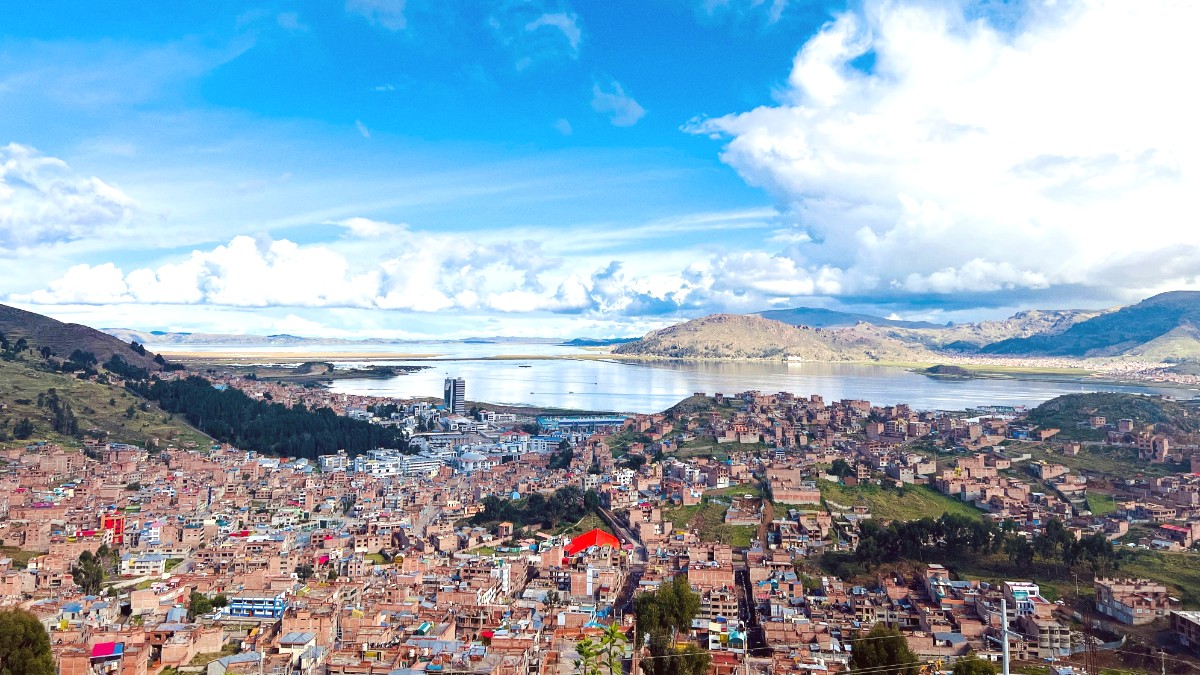
Lake Titicaca, Peru
Claro, Movistar, Entel, and Bitel are the main mobile network providers. Entel often holds recommendations for its coverage and competitive data plans. Purchase SIM cards upon arrival in Peru (at Lima airport, or in Puno at official provider stores, e.g., on Calle Lima or near the Plaza). A passport is needed for registration.
Most hotels and hostels furnish free Wi-Fi, though quality varies. Many cafes and restaurants in the city center grant free Wi-Fi for customers. Public Wi-Fi spots remain limited. Connectivity is generally strong in Puno city, but can be spotty on Lake Titicaca islands (especially Amantani), where connections might be slower or absent.
Spanish marks the official language. Staff in tourist-oriented hotels, tour agencies, and some restaurants speak English. English is less common with taxi drivers or local vendors. Use the Google Translate app (download Spanish for offline use) or carry a phrasebook.
Learning a few basic phrases will enrich your interactions.
Frequent travelers value Priority Pass for airport lounge access. Compensair assists with flight delay or cancellation compensation.
Cultural awareness enriches your visit to Puno.
A simple 'Hola' or 'Buenos Días' suffices. Handshakes mark common greetings. Close friends may greet with a single kiss on the cheek.
Generally conservative dress is typical, especially in religious settings. Modest clothing covers shoulders and knees when visiting churches or traditional communities.
Ask permission with '¿Puedo tomar una foto?' before photographing people. Respect declines. Consider buying a craft as a token of appreciation.
Tipping gains appreciation but is not always mandatory. Learn the 'menú del día' custom for value. (More details in sections 2.3 and 7.1 of overall guide).
Avoid discussions on politics or religion unless locals begin the conversation. Do not glorify or compare with illicit drug trade. Do not display excessive wealth. Be sensitive to local customs and traditions, especially on the islands.
For more in-depth language learning before your trip, consider platforms like Rosetta Stone.
Travelers with mobility challenges find Puno's infrastructure often challenging.
Puno's infrastructure generally lacks wheelchair accessibility. Streets can be uneven, sidewalks narrow or absent, and buildings often without ramps or elevators. Public transportation is not accessible.
Accessible options stay limited. Plaza de Armas and Calle Lima are relatively flat, but surrounding areas are hilly. Some newer hotels may have accessible rooms, but this is not guaranteed. Private transport serves well for getting around with mobility challenges.
No specialized services exist widely for these groups. Travel with a companion is highly recommended for visual or hearing impairments.
Contact specific hotels or tour operators directly to inquire about their accessibility features. Websites like Wheelchair Accessible Travel Blog or Accessible Peru may furnish insights, but specific information for Puno is limited.
Carry small denominations of local currency for markets and smaller purchases.